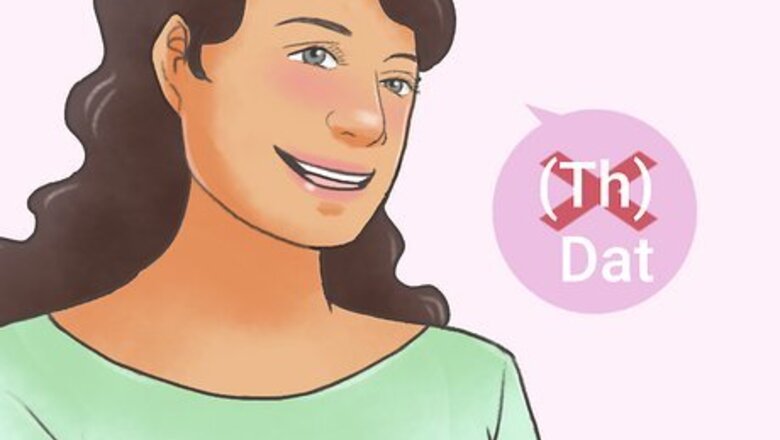
views
Tweaking Vowels and Consonants
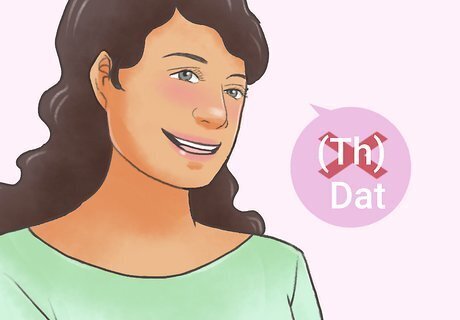
Pronounce “th” like a “d.” Place your tongue behind your teeth as you say words like “that” and “there.” These words become “dat” and “dere.” Remember to speak with a nasal tone, letting your voice resonate through your nose. Other “th” word examples include this, these, and those.
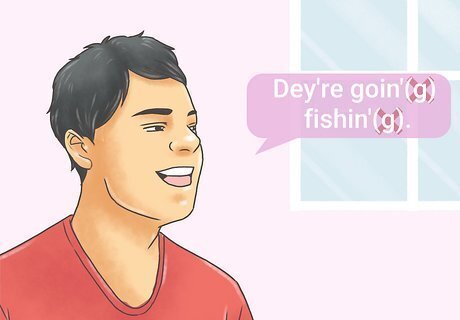
Drop the “g” off “-ing” words. Abbreviate these words by leaving out the ending. A word like “going” becomes “goin’.” In Wisconsin, “They’re going fishing” becomes “Dey’re goin’ fishin’.” Another example is, “I’d be happy calling ’ dem stop ‘n go lights.”
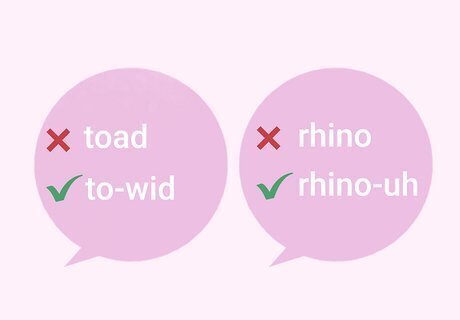
Lengthen long “o” sounds into two syllables. The word “toad” normally has one syllable. In Wisconsin, pronounce it with a long “o” and a short i. It’ll sound like “tow-id.” A word such as “rhino” becomes “rhino-uh.” Pronounce the “no” with two syllables so it sounds like the name Noah.
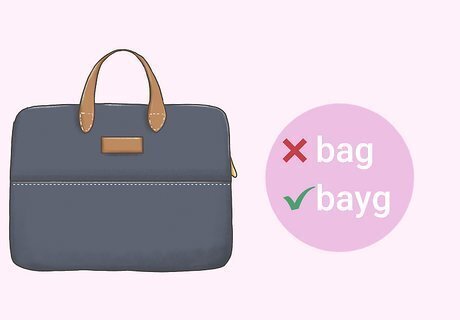
Turn the short “a” into a long “a” sound for some words. The “a” in words like bag and drag are pronounced like the “a” in bagel. Draw out the vowel. Bag becomes “bayg” and drag becomes “drayg.” A rag becomes a “rayg” and lag becomes “layg.”
Using Wisconsin Lingo
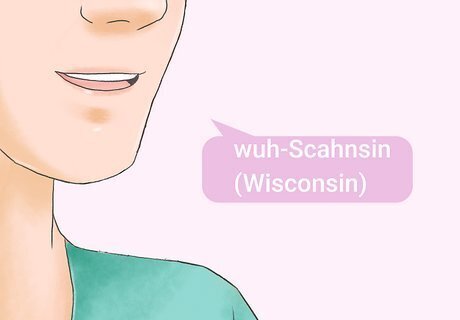
Memorize Wisconsinite pronunciations for the state and cities. The “Wi” in Wisconsin is softly pronounced as “Wah.” The “o” is pronounced like the “a” in “cat,” so you may hear “wuh-Scahnsin.” Milwaukee is pronounced without the “l,” so it sounds like “Muh-WOK-key.” Shawano is pronounced “Shah-no.”
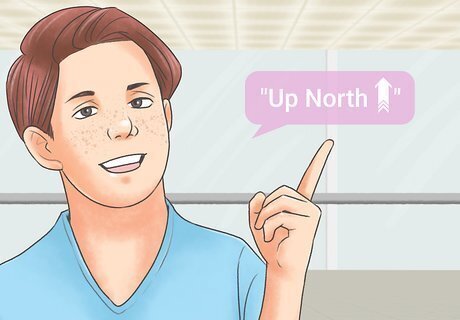
"Up North" is the term for anything north of you, all the way up to the state border. Many people go north to vacation, hunt, and fish.
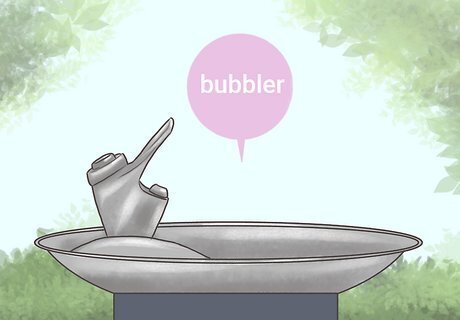
Learn local terms for objects. Some objects in Wisconsin have different names than elsewhere. A bubbler is a drinking fountain. Traffic lights are referred to as stop ‘n go lights. The midday meal may be called dinner, but the evening meal is supper. Some people may refer to ATMs as TYME machines.
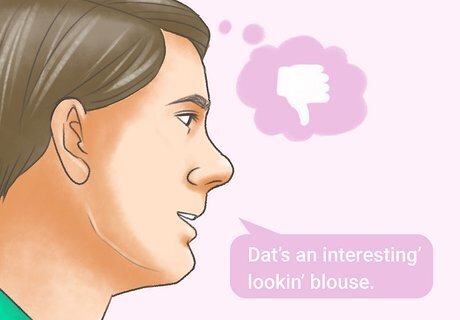
Use “interesting” for polite criticism. For example, a Wisconsinite may say, “Dat’s an interesting ’ lookin’ blouse.” It means the blouse looks strange or unpleasant. The word can be used to describe bad-tasting food without aggression.
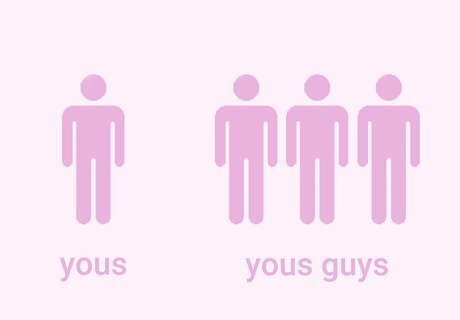
Say “yous” or “yous guys” when referring to others. You becomes “yous.” When referring to a group, say “yous guys.” For example,you may use these words to ask where someone is from. “Where-a-bouts are yous guys from?”

Say “ya know” to start and end thoughts. You can start with “Ya know” to show that you’re about to share a thought. Ending a sentence with “ya know?” is a way of asking if someone else agrees or understands what you shared.

Make polite requests with “real quick” and “one time.” Someone can say to you, “Can you stop by da store real quick?” or “Let me see dat one time.” They aren’t demanding that you be speedy. “Real quick” and “one time” make requests seem softer and less of a hassle. ”Once” is also used in place of “one time.” For example, say, “Come by here once” to suggest that someone should come to where you are.
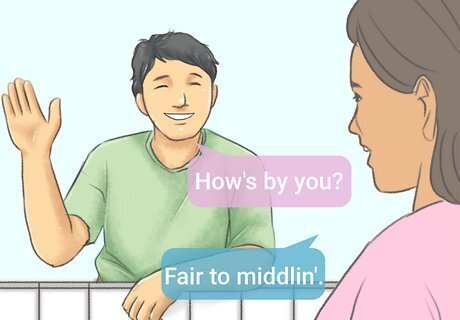
Use “go by” or “come by” for direction. Instead of “go to” or “come to,” replace the “to” with “by.” For example, say, “Go by da store, den come by me.” It means the person should go to the store, then go to your location. ”By” may also be used as a greeting, such as in “How’s by you?” You may answer this with “Fair to middling ’.”
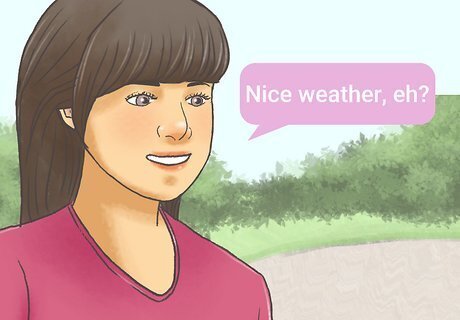
Add “‘n so” and “eh” to turn sentences into gentle questions. Both phrases have the same meaning. They are used at the ends of statements to prompt a response. “Eh?” is pronounced like “hay” without the “h.” “‘N so” is pronounced like “en SEW” and stands for “ain’t that so?” Although these two phrases are used the same way, “‘n so?” sounds a little stronger. Your conversation partner may provide a more forceful response to what you said.
















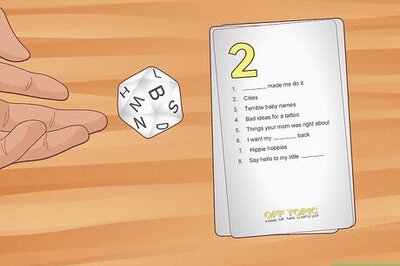



Comments
0 comment